I grew up in the 1950s, and I remember our garden as being typical of the period: composed of a central lawn surrounded by borders and a vegetable patch with fruit trees at the back — a result of the U.K.'s "Dig for Victory" campaign of the war years. This was how gardens had been laid out in British suburban gardens since the 1930s, but in the swinging '60s the style was about to change.
As a horticultural student in the late '60s, I had a defining moment when my eyes were opened to the real possibilities of small-garden design; this was when I read
Room Outside, a now-classic book by British garden designer John Brookes.
It was almost the first aspirational guide to garden design for the '60s homeowner who wanted to design, construct and plant his or her own garden. Brookes changed my thinking on garden design by designing gardens for people and how they use them, rather than just as places to grow plants in. He taught me to take account of how much time the owner will spend in the garden and the ages of those using the garden.
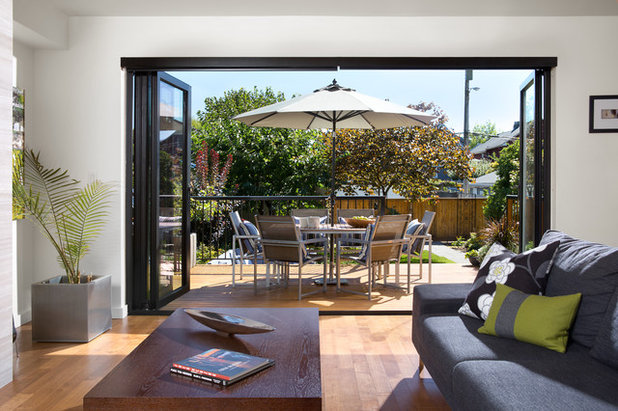
Klondike Contracting
Brookes really opened my eyes — as well as the eyes of many other young horticulturalists and garden designers — to his belief that the garden was fundamentally a place for use by people, not just a static picture.
In the '50s and '60s, gardening had not kept pace with the influence of design in other lifestyle areas, probably because it was still mainly seen as an old person's hobby. Almost in an instant, however, Brooke's alternative ideas really did change the way we thought of our garden spaces and how we could design and use them.
Room Outside became my bible, influencing not only how I looked at garden design, but also how I physically drew my plans, copying his fluid draftsmanship with ink on tracing paper in the days before CAD.
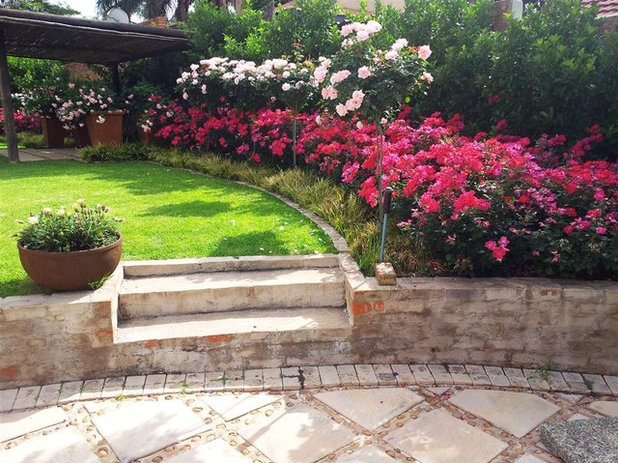
Helét van Blerk
One of the major changes in thought — as a horticultural student, I found this difficult to swallow at first — was that garden plants were just one of the features of a garden, not necessarily the stars of it.
"We have allowed ourselves to be conned into believing that the garden is only a set-piece for showing off plants, to be admired for perhaps two or three months of the summer, and not even looked at during the winter," Brookes wrote. He believed that though plants are an important piece of the garden design, the main consideration in any garden design should be how people are going to use the garden.
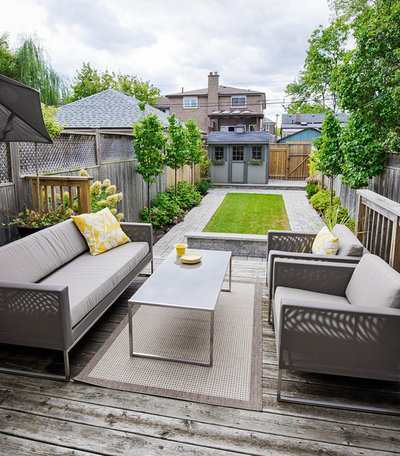
Affecting Spaces
It's clear in comparing the previous image to this one just how different the use of plants becomes when the designer uses Brookes' ideas.
In my early years of working in garden design, after leaving college in the early '70s, I can remember using a very restricted range of plants in my Brookes-style garden designs, including mainly ground covers, such as
Hypericum calycinum and
Brachyglottis greyi, and smaller conifers including
Chamaecyparis pisifera 'Boulevard' and
Thuja occidentalis 'Rheingold'. These were planted in blocks or groups rather than being in a traditional mixed border.
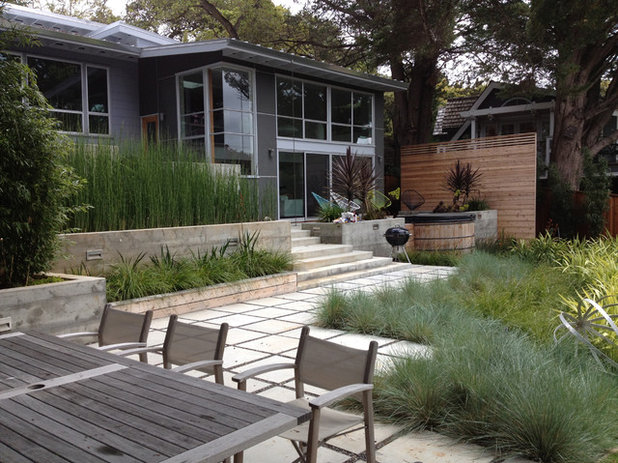
Costello Kennedy Landscape Architecture
This style of garden layout is commonplace today, with the usage of the garden space clearly defined, so it is difficult to understand just what a revolution John Brookes started in Britain with the publication of his first book.
Brookes took some of his new ideas from the new architecture and gardens in the United States and Scandinavia, which may have been formulated under different conditions but still presented the same conclusions that he came to. It was not just outside influence that defined his views on design, but also the radical change in our way of life compared to prewar days.
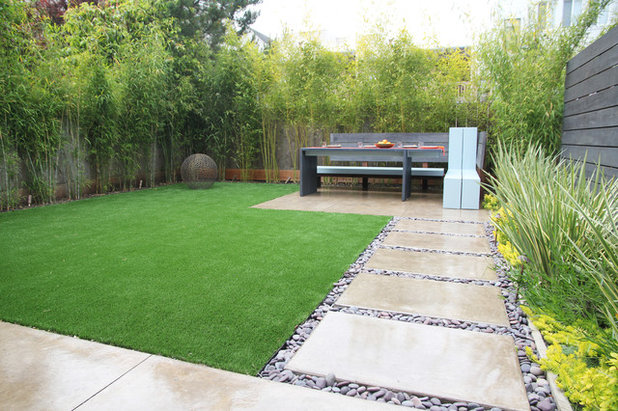
Boxleaf Design, Inc.
Reading
Room Outside today, with 21st-century eyes, I find it easy to see how our lifestyle has changed, especially relating to work. Brookes saw a very traditional middle-class family as an average family, with the husband working and the wife carrying out housewifely duties. Some of these duties, such as sewing, shelling peas and ironing, he felt could be carried out in the newly designed style of garden.
But he linked this lifestyle to his design ideas by proposing that the amount of time the householder can spare for garden maintenance was vital to the initial design. Grassing over a large area of the garden may initially look labor saving, yet over a long period it involves a lot of mowing and general upkeep.
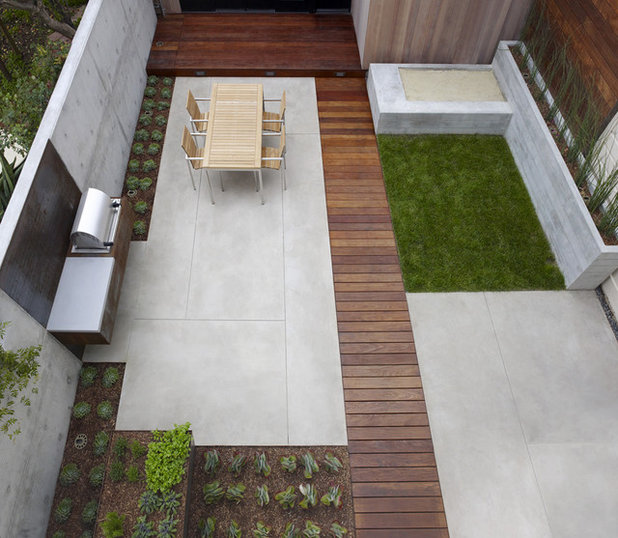
Christopher Yates Landscape Architecture
Room Outside was designed to be a complete DIY handbook not only for horticultural students, but also for those who wished to design and build a garden in a modern style.
Brookes outlined simple geometric design techniques to balance the garden with the house, creating patterns that could tie together all the functions of the garden; the resulting designs echoed Mondrian paintings.
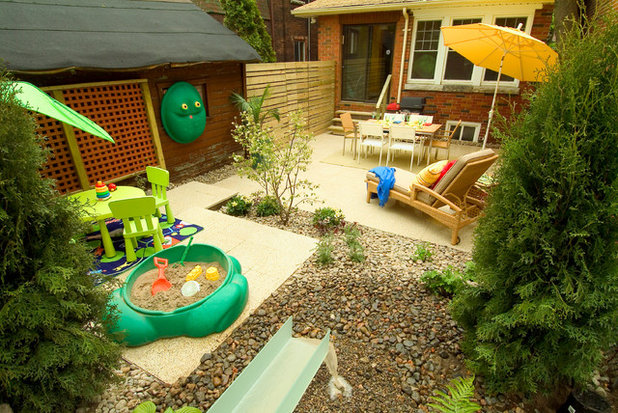
Carson Arthur Design
In
Room Outside Brookes also showed us that different age groups need different features within the garden, and that this should be considered in the design. It is no good to expect children to play soccer on grass surrounded by their parents' prize herbaceous border.
This small garden follows his precepts perfectly by allocating space for each purpose: There's an area for children of different ages and also space for relaxing and dining. With the design considering children to begin with, any abandoned toys will not disrupt the whole layout.
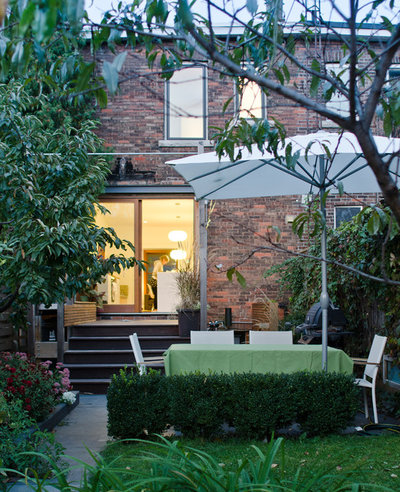
blackLAB architects inc.
In the early years of my career I designed many small gardens, most based on the concepts that I'd discovered in this book by Brookes that I had read as a student. This one book changed the way I looked at garden design, and I can still see those same ideas that excited me more than 40 years ago.
Brookes neatly summed up his ideas in this one sentence: "Design then is not the acquisition and placing of ornaments and plants, or even drawing of plans or pretty patterns, but the logical reasoning out of what you and your family want from an area, to provide for yourselves a purpose built uncovered extension to your home, which you can afford, look after and enjoy."





